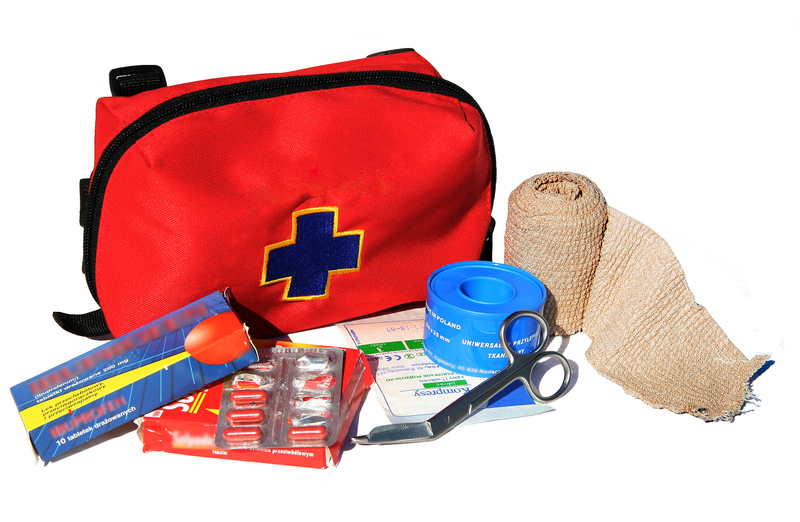A good first aid kit contains not only basic emergency supplies, but also anything that's relevant to the type of situation you're going to be in, the activities you'll be engaging, and your own specific health. First, you need to add items you can use to close up a wound and stop the flow of bleeding:
Duct Tape: Yes, duct tape. It can be a life saver when trying to treat a cut or wound when medical help may be too far away to reach quickly. Duct tape can quickly and safely pull together an open wound, and can buy you the time you need to reach medical help.
Butterfly Sutures: Another great way to close up small wounds is to use something know as a butterfly suture. These types of adhesive strips pull the edges of a small cut together in the same way as a doctor’s stitches.
When using duct tape or butterfly sutures to close a wound, make sure you carefully clean the wound and wash out any foreign materials or debris. If you have any kind of antiseptic, apply it to the wound and dry the area. Start in the middle of the wound and apply the strips, pulling the cut together as tightly as possible. Work your way towards the edges, gently bringing the two sides together and taping them shut.
Preventing infection is also crucial, especially since you might be in a situation which isn't especially hygienic or sanitary:
Gauze
Adhesive wound dressings
Antibiotic ointments and creams
Broad spectrum oral Antibiotics – This may be difficult to come by since you need a prescription, but some doctors may be willing to prescribe them as a preventative measure if you’re going to be on an extended trip out in the wilderness. Erythromycin, Ciprofloxacin, and Amoxicillin are all broad spectrum antibiotics.
Antiseptics and Disinfectants – Peroxide, Isopropyl Alcohol, PVP Iodine Ampules and Antiseptic wipes are all things that need to be in your kit.
Pain and inflammation are two other major concerns, because they can impair your ability to seek medical treatment and potentially make your condition worse. To deal with that, carry some or all of these:
Aspirin, Tylenol or Ibuprofen
Codeine or some type of pain killer
Chemical Ice Bags
Lidocaine
Allergies can strike without warning, and even if you don't have a history of allergies, you could still have an allergic reaction to something. That's why you need these:
Antihistamine – Benadryl, otherwise known by its generic name Diphenhydramine HCl, is one of the best antihistamines on the market and is something that should be part of everyone’s kit.
Antihistamine creams
EpiPen or Epinephrine – For those with a life-threatening allergy, having an EpiPen with you at all times is essential. They can help stop an anaphylaxis reaction and buy you time until medical help arrives
Plus, here are some other assorted items that can ensure your emergency first aid kit is equipped for whatever medical crisis you have to deal with:
Emergency dental kit
Sterile needles and surgical blades.
Splints – SAM and air splints
Quick Clot Gauze
Grooming and cleaning tools – Fingernail clippers, soap, Antiseptic wipes.
Tweezers
Scissors
Disposable thermometers
Disposable gloves
Sterile eyewash & eye dressings
Sunblock
Vaseline
Burn creams and dressings
Medical manuals and basic first aid instructions.
You should also bring anything you'll need for your specific health issues and medical conditions, including an ample supply of any prescription or over-the-counter medications you need to take on a regular basis.
What do you think of this list? Does this sound like an adequate first aid kit? What do you stock in your first aid kit? Share your thoughts in the comment section below!
Article Source: Off Grid Survival
